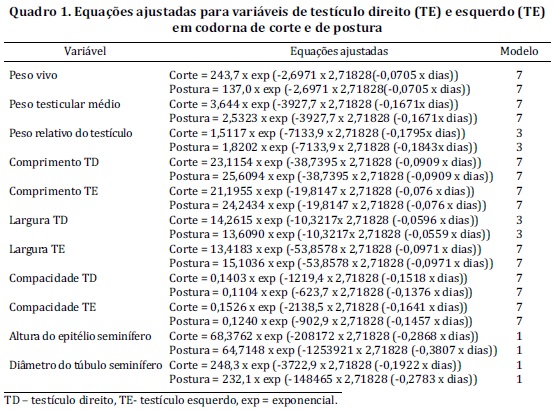Meat- and egg-type quails were analyzed to determine reproductive development, puberty and the onset of senility. For this purpose, 288 quails (144 meat- and 144 egg-type quails) were followed from hatch to 360 days old. The birds were distributed by age in 18 groups, 8 quails/group/type of quail. After 35 days quails were maintained under long daylength conditions (17L: 7D). The live weight and the macro and microscopical testicular characteristics were determined in each period. The data were analyzed to determine the growth curve and the behavior of parameters. The model that best fits the data was the non-linear Gompertz model (Y = A exp [-B and (-kt)]). Live weight and testicular morphometric parameters had an allometric behavior among themselves, and at approximately 60 days the males had sexually development, and body weight stabilized at about 100 days. The right testicle was more cranial than the left, differing in the length and width, but no difference in testicular weight (P>0.05) was observed. The meat quails had a larger body weight and testicular weight than the egg quails, but the egg-quail had a higher percentage of testes in relation to body weight. During the whole adult period the males could be considered sexually fit. Breeders had active sex characteristics until 360 days of age, represented by testicular size and by cellular activity in the seminiferous tubules.
Quail; testicles; seminiferous tubules; Gompertz






